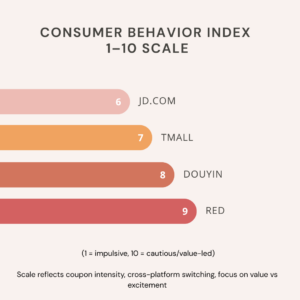A High-Tech Race with Real Stakes
China’s factories have always been loud – but the noise in 2025 sounds different. The clang of metal and whir of assembly lines are being replaced by the quiet precision of automation, AI, and semiconductors. This isn’t just progress; it’s transformation.
2025 marks the year China’s manufacturing story shifts from scale to sophistication, from muscle to microchips. And if ‘The Red Tape Is Ripping: Why 2025 Is a Breakout Year for Doing Business in China’ showed how policy cleared the runway, this is the moment those engines roar to life.
The Numbers Behind the Shift
In 2024, high-tech manufacturing grew 8.9% year on year, outpacing the broader industrial sector and confirming where China’s momentum is heading. Investments in high-tech industries jumped 8.0%, while high-tech manufacturing and services expanded 7.0% and 10.2%, respectively. Some sectors didn’t just grow – they skyrocketed.
Investments in aerospace vehicles and equipment surged 39.5%, and professional technical services climbed 30.3%.
As 2025 closes out both the Made in China 2025 plan and the 14th Five-Year Plan, these aren’t isolated figures – they’re a preview of what’s next. Beijing is doubling down on technological self-reliance and pushing innovation across its industrial chain.
Silicon, Steel, and Self-Reliance
The Semiconductor Ambition
No sector captures China’s urgency like semiconductors. The government’s plan to hit US$204 billion in chip market value by 2025 reflects both ambition and necessity.
Export controls and geopolitical tensions have only accelerated the drive for independence. A US$143 billion state-backed fund is funneling capital into everything from equipment manufacturing to advanced chip design, ensuring that local players can fill gaps once dominated by imports.
The Artificial Intelligence Surge

AI isn’t just powering apps – it’s powering China’s future industries. The nation’s AI market is forecast to reach US$154.8 billion by 2030, growing at an impressive 27.78% annually from 2025 onward. From smart logistics to autonomous production lines, AI is no longer a niche; it’s infrastructure.
The Robots That Build Robots

Automation is the new frontier of scale. China’s robotics market is expected to reach US$9.04 billion by 2025, with a compound annual growth rate of 11.4% through 2029. Factories that once relied on labor are now driven by sensors, machine vision, and predictive algorithms – the kind of quiet revolution that reshapes global supply chains.
Aerospace Takes Flight
Then there’s aerospace, where government investment climbed nearly 40% in 2024. Beyond commercial aviation, China is developing satellite constellations and advanced manufacturing systems for space infrastructure – tying together its ambitions for connectivity, logistics, and defence technology.
The Rise of New Quality Productive Forces
New Quality Productive Forces (NQPFs)” isn’t just a policy term; it’s China’s declaration that the next stage of growth will come from reinvention, not replication. The goal is to build new industries through disruptive technologies while transforming traditional ones through digital and green upgrades. It’s less a reboot, more a rewrite – a shift from factory floor efficiency to full-spectrum innovation.
The Next Era of Opportunity
The message for foreign companies is clear: China isn’t just a manufacturing base anymore. It’s an innovation ecosystem – one powered by data, automation, and relentless state support.
For investors who can bring advanced technology, specialized components, or AI-driven solutions, this market isn’t closing off; it’s opening strategically.
The question isn’t whether China’s high-tech ascent will shape global industries – it’s how soon your brand joins the story. Digital Crew helps international businesses find their edge in this fast-moving landscape, from partnerships to full-scale market entry.




















